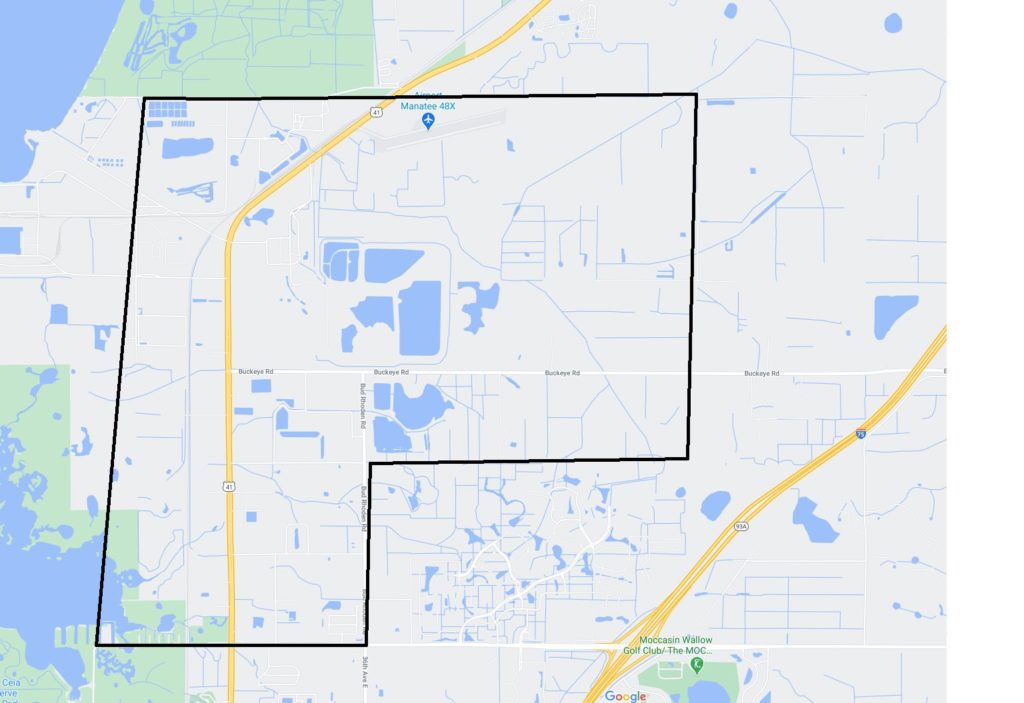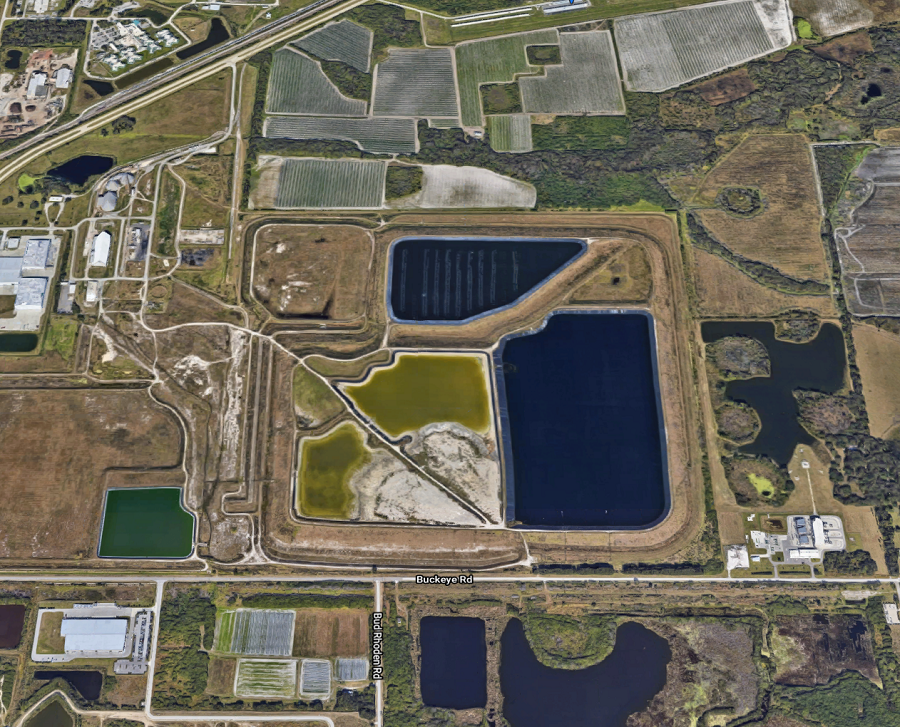
A State of Emergency continues in Florida today where a radioactive flash flood threat persists. Home to a former phosphate plant, toxic wastewater ponds at Piney Point in Manatee County could collapse at anytime, sending a 77 acre lake of 25 feet deep water to surrounding areas. A State of Emergency was declared at the site by Florida Governor Rob DeSantis on Saturday after a significant leak at the site was identified on Friday. Hundreds of people have been evacuated from nearby homes, businesses, and the local county jail.
The site’s holding pool is located in a stack of radioactive phosphogypsum, storing nearly 400 million gallons of wastewater containing nitrogen, phosphorous, ammonia, and small amounts of radium and uranium from the former plant’s operations, as well as seawater from the dredging of a nearby berth.
The industrial plant at the site first opened in 1966 by Borden Chemical to process phosphate, a key ingredient in fertilizer. Since then, a series of missteps have created an environmental ticking timebomb. Borden Chemical was caught dumping waste in nearby Bishop Harbor which led to fish kills. Mulberry Corporation, a subsequent owner of the property, ceased operations in 2001 after saying their financial difficulties make it impossible to ensure environmental security at the site. In 2001, Tropical Storm Gabrielle impacted Florida, forcing the Florida Department of Environmental Protection (DEP) to release 10 million gallons of partially treated wastewater into Bishop Harbor to prevent a total collapse at the site. Just 3 years later, another hurricane impacted the site, punching a whole in one of the site’s dikes, spilling 70 million gallons of contaminated water. Another incident in 2011 put 170 million gallons of water into Bishop Harbor and Tampa Bay.

HRK Holdings is the current owner of the property. In 2012, HRK Holdings filed for Chapter 11 bankruptcy citing expenses incurred from yet another leak at the accident-prone site.
The latest leak was reported to authorities March 26 and worsened over the following days, with residents in the area ordered to evacuate on April 1. Efforts to repair the leaks on April 2 and 3 were unsuccessful, forcing Governor DeSantis to declare a state of emergency and broader evacuations.

To prevent a total collapse, water is being pumped from the site and discharged into Tampa Bay at the rate of thousands of gallons per minute and tens of millions of gallons a day. DeSantis said wastewater discharged into Tampa Bay isn’t considered radioactive, but it does contain phosphorous and nitrogen. These two ingredients could create a large algae bloom in Tampa Bay, leading to a significant fish kill.
If the reservoir completely fails, it could lead to a 20 foot tall wave of water flooding the surrounding area, potentially destabilizing the gypsum stacks there which would release radioactive material into the area. In addition to homes and businesses, the Manatee County Jail is within the flood threat zone of the site. While they were originally planning to move inmates to the second floor of the facility, a decision was made to evacuate prisoners to other jails outside of the hazard zone.
“Public health and safety is the top priority,” DeSantis said. “The goal is to ensure the integrity of the stack system as quickly as possible.”
Florida Department of Environmental Protection Secretary Noah Valenstein called the disaster the “last chapter” for the site. In an interview with the Bradenton Herald, Valenstein said they are committed to make sure the site is closed once this emergency disaster is under control. Experts want all fluids drained from the site and caps to be placed over the toxic and radioactive solids that remain behind.